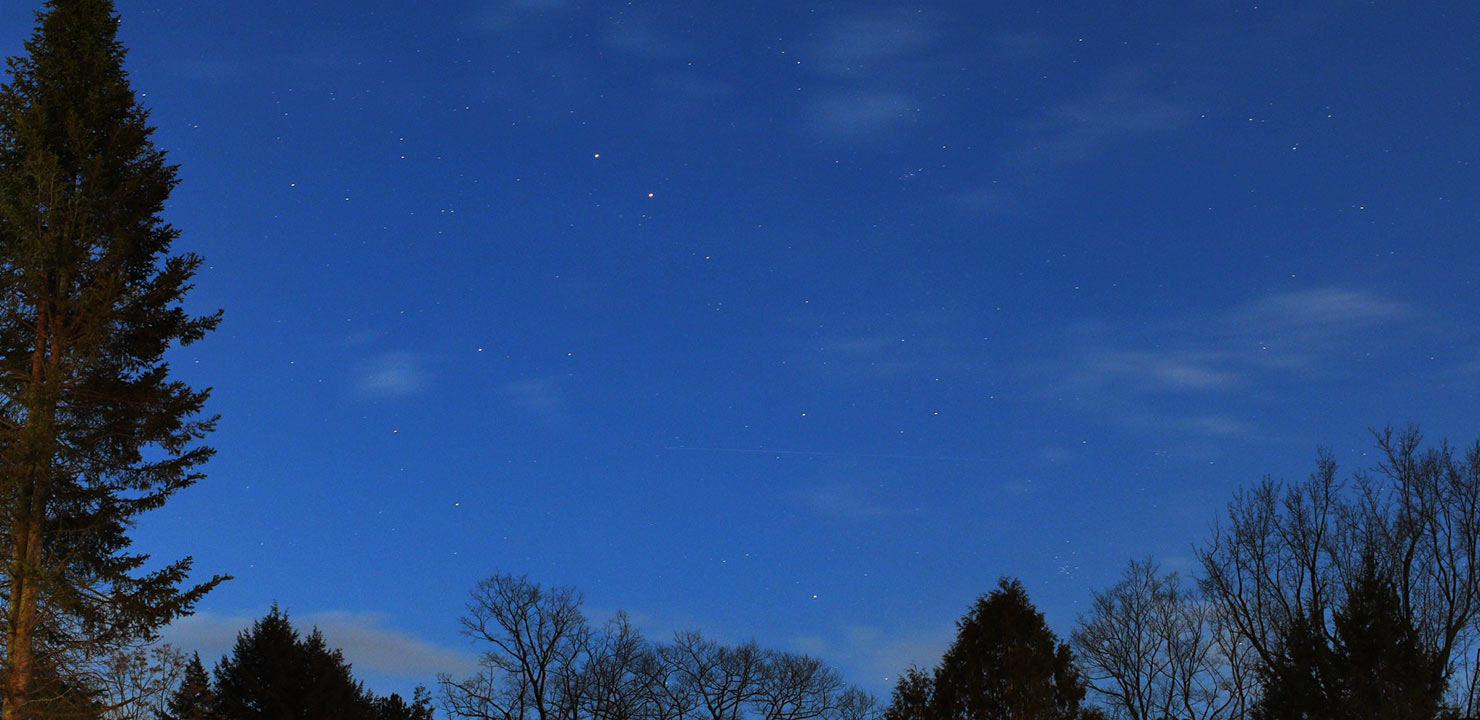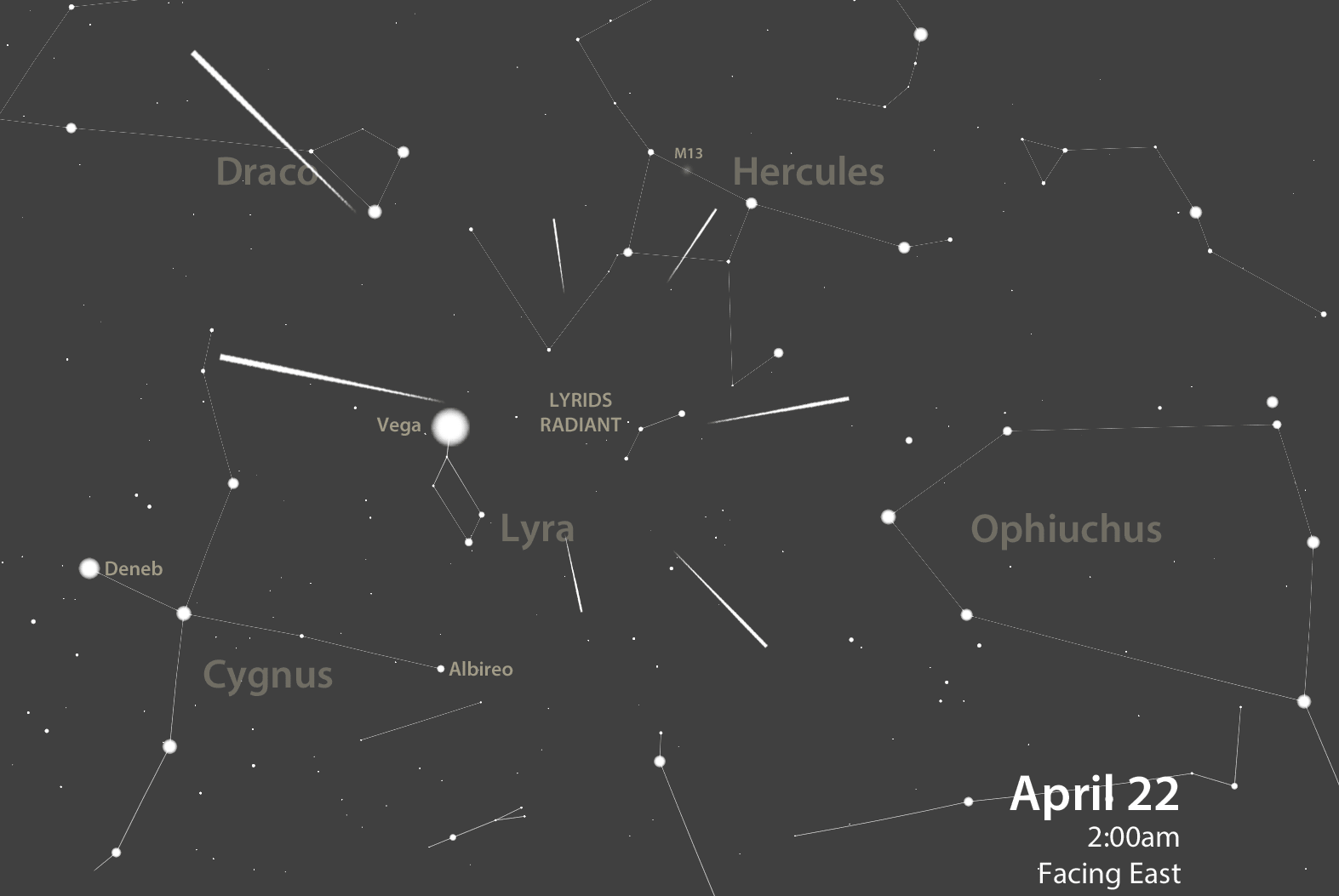
April Lyrids Meteor Shower & Moon and Planet Highlights
April 2018 :
Note: This article may contain outdated information
This article was published in the April 2018 issue of The Skyscraper and likely contains some information that was pertinent only for that month. It is being provided here for historical reference only.
March winds bring April showers. Everyone is familiar with that phrase. But we had more than our fair share of wind and rain in February! Yes, February ended up being the warmest February since records were kept beginning in 1906. Then March roared in like a lion with nor’easter Riley. Then a second nor’easter slammed southern New England a week later. These weather extremes are the new normal as global warming runs amuck. It certainly challenges amateur astronomers to conduct any observing sessions. And the public outreach programs at the local observatories do suffer from the lack of cloud-free skies.
However, having said that, I’m hoping for one shower in April. It’s the annual April Lyrids meteor shower which peaks during the early morning hours between midnight and dawn on the 22nd. It’s been several months since we’ve experienced a decent display of shooting stars. The Lyrids are the oldest known shooting star display, having been observed by Chinese astronomers on March 16, 687 BCE. Being an old display, the number of meteors populating this stream of particles has greatly diminished. About 10-15 meteors per hour can be counted from dark sky locations.

These swift and bright meteors disintegrate after hitting our atmosphere at a moderate speed of 29.8 miles per second. They often produce luminous trains of dust that can be observed for several seconds. A first quarter Moon will set around 1:38 a.m. EDT, so it will not interfere with the midnight to dawn peak of the Lyrids.
The Lyrids appear to radiate outward from an area of sky on the Lyra-Hercules border near the bright star Vega, which will be about 45 degrees (halfway between the horizon and zenith) above the eastern horizon at midnight and well placed for observing. Let your eyes roam the heavens while facing this general direction. Remember, even though you can trace back the dust train left by a Lyrid meteor back to the radiant point, members of this shower can appear anywhere in the sky. The Lyrids are a fairly narrow stream of particles, so don’t expect many to be seen before or after peak night.
We still must wait a month or so before the local observatories can begin to showcase the planet Jupiter through their telescopes. However, if you do find yourself out under the stars viewing the Lyrids, look about 22 degrees above the southern horizon around 2:00 a.m. and you’ll see bright Jupiter as he ascends the sky. On April 1st he will rise around 9:30 p.m.
There are several other beautiful sky scenes to view during April as well. On the 2nd and 3rd you can observe the conjunction (close approach) of Saturn and Mars about 16 degrees above the southeastern horizon at 4:00 a.m.
On the 3rd you can also observe the waning gibbous Moon approximately five degrees to the upper right of Jupiter. Four days later on the 7th the Moon will join Saturn and Mars within the constellation of Sagittarius, just above the teapot handle and lid asterism. We’ll have to wait a few more months before Saturn and Mars can be observed during the public observing sessions at the local observatories. However, if you have your own telescopes, and you don’t require much beauty sleep, then by all means select a clear morning and begin exploring these fascinating worlds. I’ll highlight each one in a future column…especially Mars, as at the end of July he will be at his closest distance to the Earth for this year, about 35.8 million miles. Mars should put on a good show.
Another stunning sky scene will greet folks after sunset on April 17. A waxing crescent Moon will be below and to the left of brilliant Venus. This will be a nice photo opportunity, so snap a few images if the sky is cloud-free.
And finally, on April 30, Jupiter will be about six degrees to the left of the Full Moon. Each full moon has several names associated with it. Here in the United States many of them were bestowed by Native Americans. For April that includes Pink, Egg and Fish.
When the skies are clear be sure to visit the local observatories to explore the splendor of the heavens. Seagrave Memorial Observatory (http://www.theskyscrapers.org) in North Scituate is open every clear Saturday night. Ladd Observatory (http://www.brown.edu/Departments/Physics/Ladd/) in Providence is open every clear Tuesday night. The Margaret M. Jacoby Observatory at the CCRI Knight Campus in Warwick (http://www.ccri.edu/physics/observatory.htm) is open every clear Thursday night. Frosty Drew Observatory (http://www.frostydrew.org/) in Charlestown is open every clear Friday night.
Keep your eyes to the skies.



